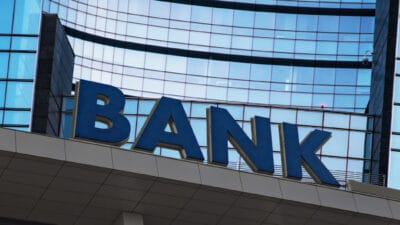The scorecard over the past 12 months for the ASX's big four banks does not make for pleasant viewing.
| Company | One Year Return |
| Commonwealth Bank of Australia (ASX:CBA) | (16%) |
| Westpac Banking Corp (ASX:WBC) | (18%) |
| Australia and New Zealand Banking Group (ASX: ANZ) | (16%) |
| National Australia Bank (ASX:NAB) | (14%) |
As some of the most popular stocks on the ASX, the pain will be widely felt. Worse, the future may not look too much better. It's not quite the death of the bank trade, but it looks to be the end of the gravy train that has made millionaires of many Mum and Dad shareholders (and their SMSFs) since the Commonwealth Bank floated almost 27 years ago.
You could put the underperformance down to the Financial Services Royal Commission, where widespread evidence of misconduct and negligence is being presented. More regulation, intense scrutiny on predatory lending and selling, and higher costs look certain. It's no coincidence that the CBA share price recently hit a 52 week low.
Headwinds
But the Royal Commission is not the only headwind for the banks. A slowing housing market, highly indebted consumers, stagnant wages, and interest rates expected to stay at current levels for what could be at least another year are all weighing on their future growth prospects.
This has already been reflected in the bank's most recent results. Commonwealth Bank reported a 1.9 per cent fall in cash profits, and an interim dividend up by just 0.5 per cent. Westpac fared slightly better, reporting a rise in cash earnings per share of 2 per cent, while keeping its dividend flat.
While the banks might look inexpensive to some — CBA trades on a price to earnings (P/E) ratio of 13 times earnings and a fully franked dividend yield of 6 per cent — when compared to UK banking giant Barclays, they are anything but cheap.
It might be sobering for the army of SMSFs who hold CBA shares to know the Barclays share price is down almost 75 per cent from its pre-GFC high. In the US, the Citigroup share price is down almost 90 per cent since 2007. When bank shares go wrong, the wealth destruction is devastating.
Australia's banks are some of the most profitable in the world. They've had some tremendous tailwinds, not the least that Australia hasn't had a recession in over 25 years, during which time house prices have gone through the roof. Population growth is another substantial tailwind.
Fully Franked Dividends Ease The Pain – But For How Long?
For bank shareholders — some of whom are the most loyal souls on the planet — the pain of the past 12 months has been eased by the payment of fully franked dividends.
Their loyalty has already been stretched — witness the returns over the past year. And it will be stretched a lot further should Labor win the next election and follow through on their promise to stop cash refunds of excess franking credits.
The betting agencies peg the chances of a Labor victory at around 60 per cent. With those odds, SMSFs are unlikely to be rushing to buy bank stocks in advance of the next federal election, probably held in the latter half of next year.
Index-hugging and income focused fund managers are likely some of the few marginal buyers of bank shares. And don't get me wrong — given the firehose that is compulsory superannuation — this will still see a substantial amount of money being invested in the big four banks.
But that won't be enough to change the fundamentals of the bank shares. When no-growth meets premium valuations, the best case scenario is a flat share price. The worst case doesn't bear thinking about.
Bruce Jackson is the founder of The Capital Club. This article was originally published here.








